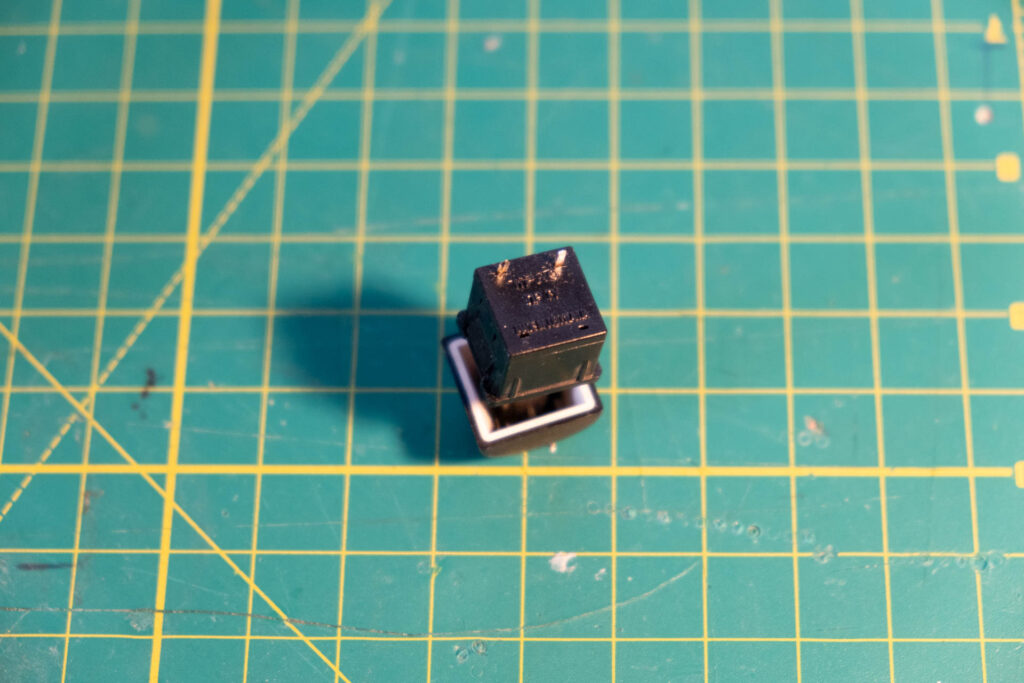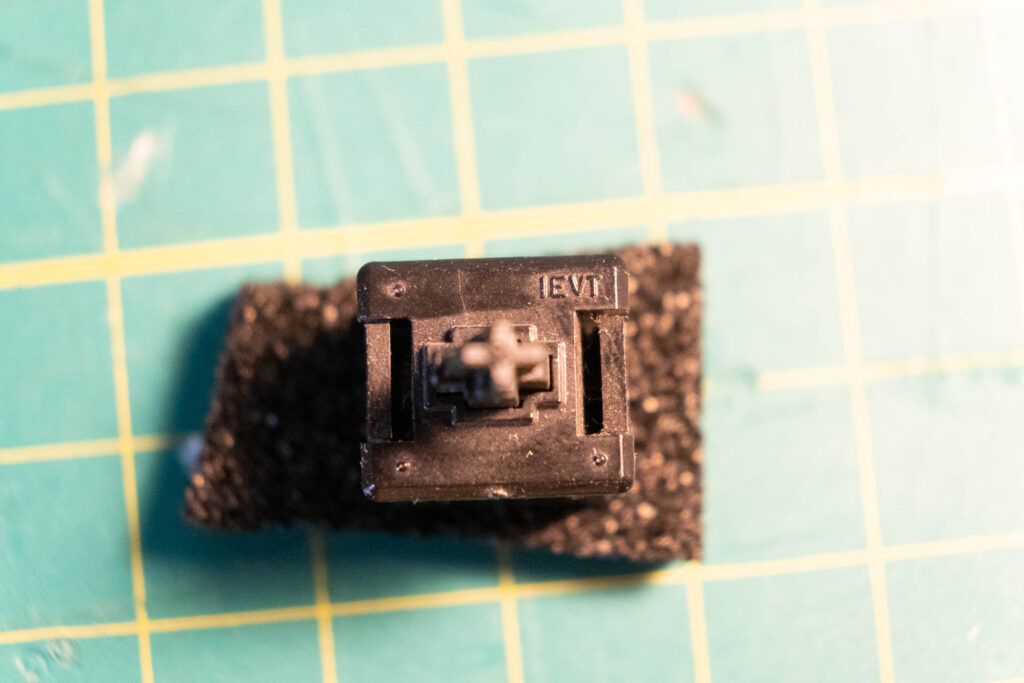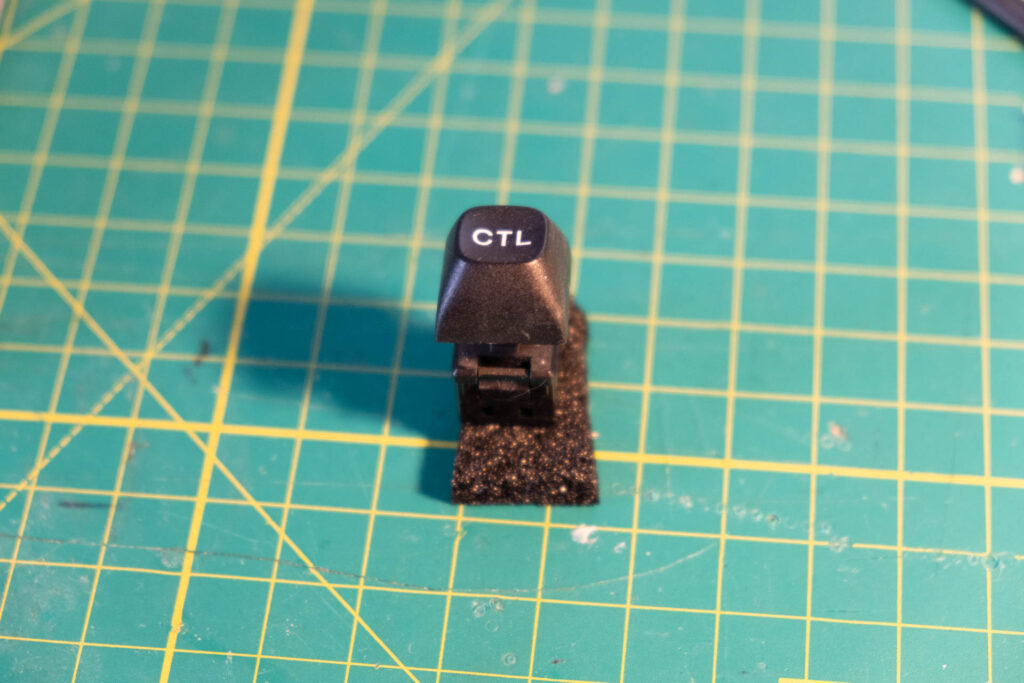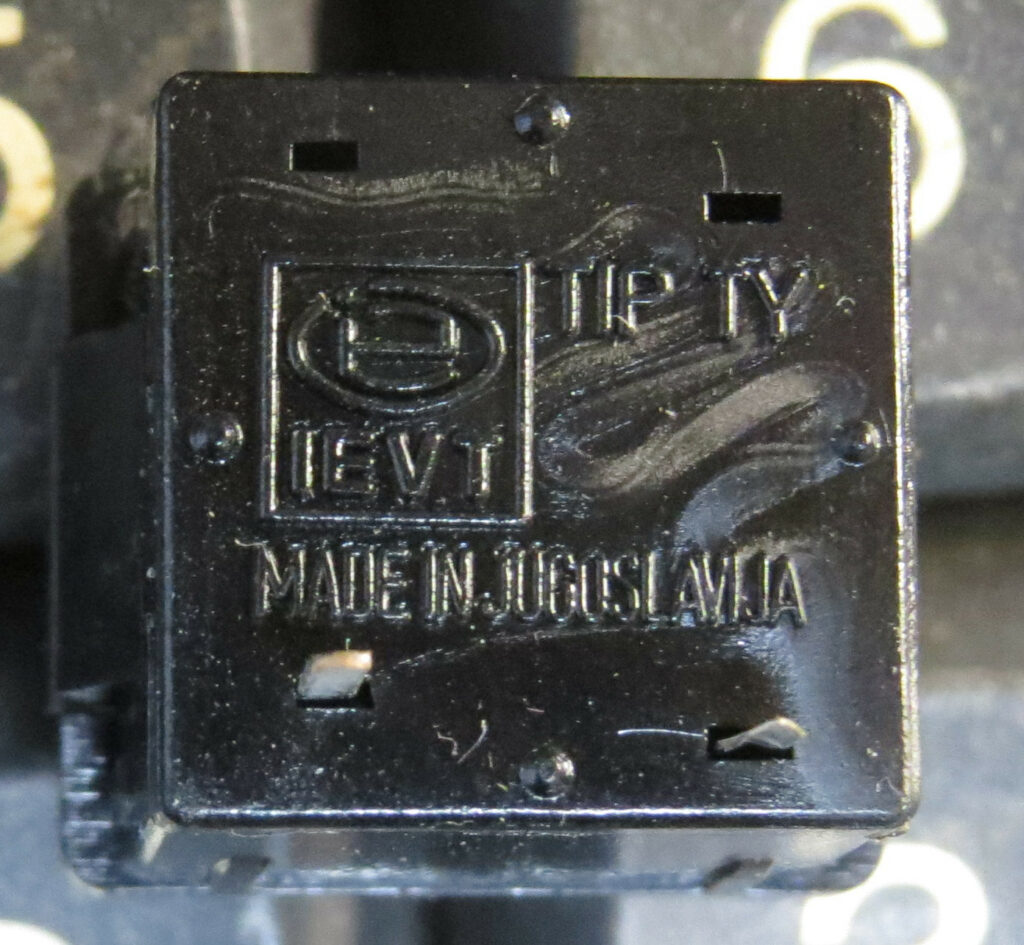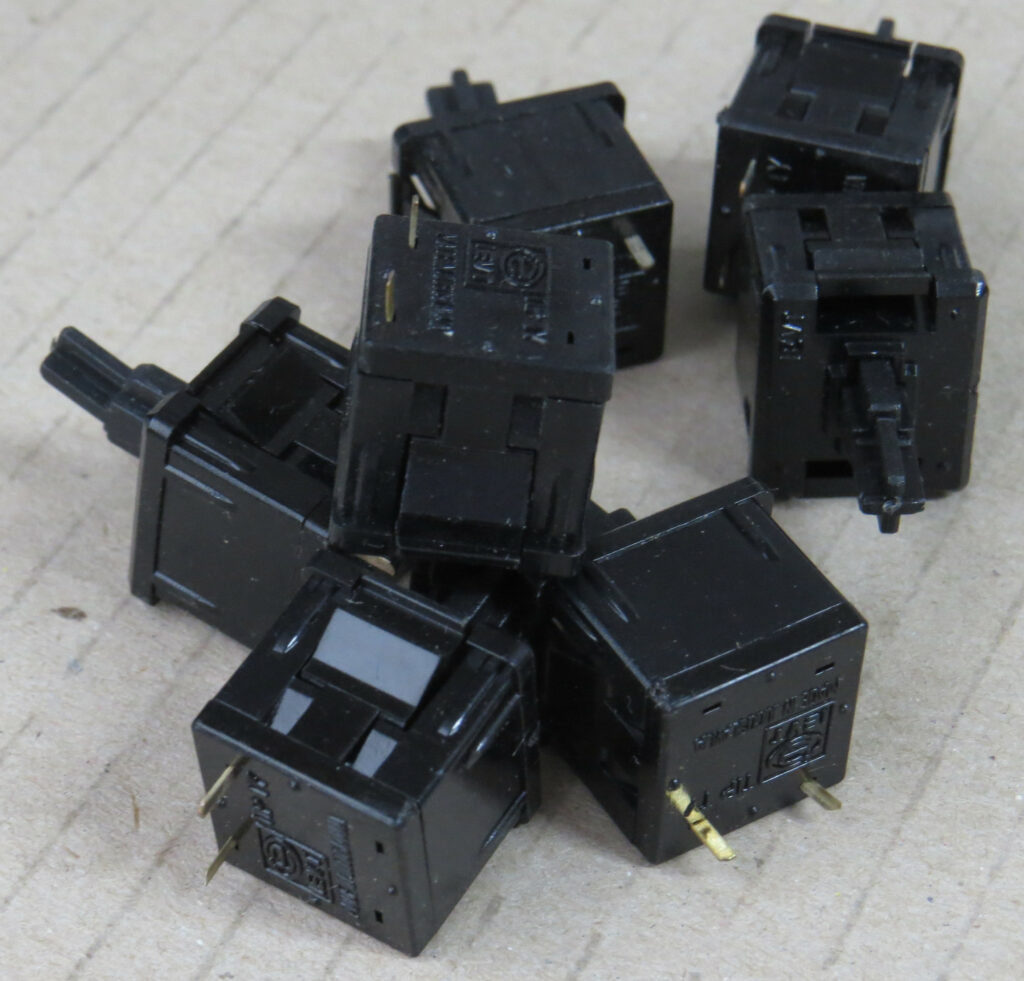Back in 2020 I built my first Galaksija computer, using the original single board design. Building this computer was quite a challenge for me, as I was pretty inexperienced with electronics. But the most difficult challenge was finding compatible key switches — so difficult actually, that it took me almost 3 years to find the right ones. This short article describes this journey, as well as a brief history of the IEVT TY key switches used in the Galaksija and other Yugoslav computers like the Orao.
If you’re looking for the replacement SMK style switches, I got mine on eBay from this seller.

When building my first Galaksija, I bought some Cherry MX compatible Gateron keyswitches. I soon found out that not only did my board not have mounting holes, the connectors were also too far from each other to work with these standard switches. I ended up soldering some extra wire onto these switches in order to get my Galaksija working, but the keyboard was horribly unstable and very unpleasant to use. The only thing I knew about the original key switches was that they were meant to be IEVT TY or TX switches — because they were listed as such in the original parts list.
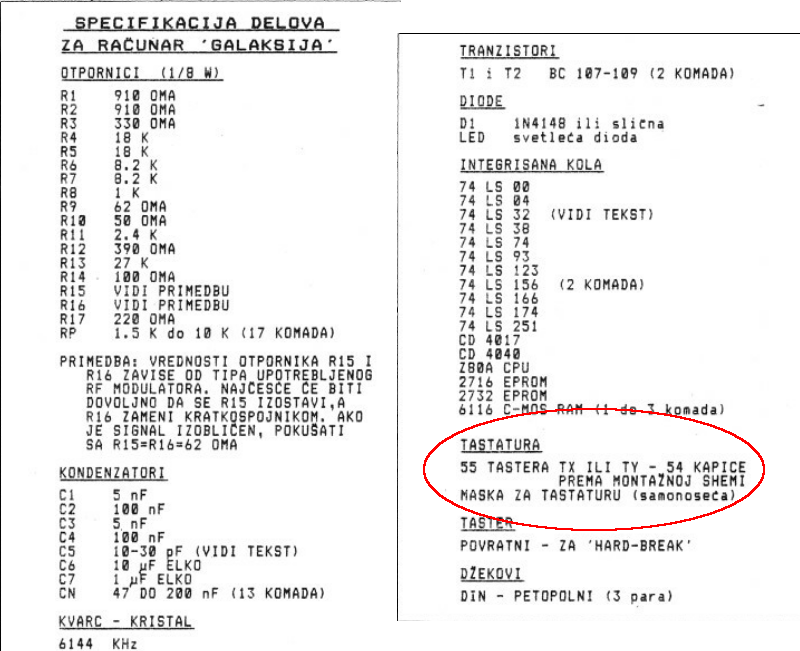
No other information was provided that would explain what standard these key switches were. Back in 1984, key switches were among the parts that the Računari u vašoj kući magazine offered to folks as part of their kit (along with the PCB, keycaps and the keyboard plate). The key switches were manufactured by Inštitut za elektroniko in vakuumsko tehniko (IEVT) from Ljubljana. That was the extent of available information I had. I completed the Galaksija with my improvised Gateron switches and hadn’t thought much about them for a while. Finally, a few weeks ago someone provided me with a scan of the IEVT catalog featuring TY switches, and this restarted my research.
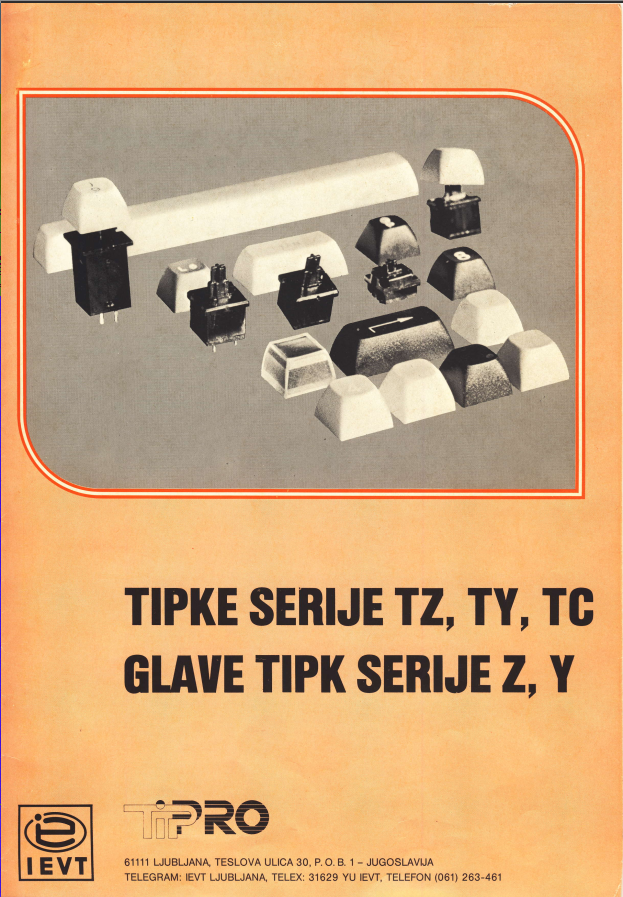
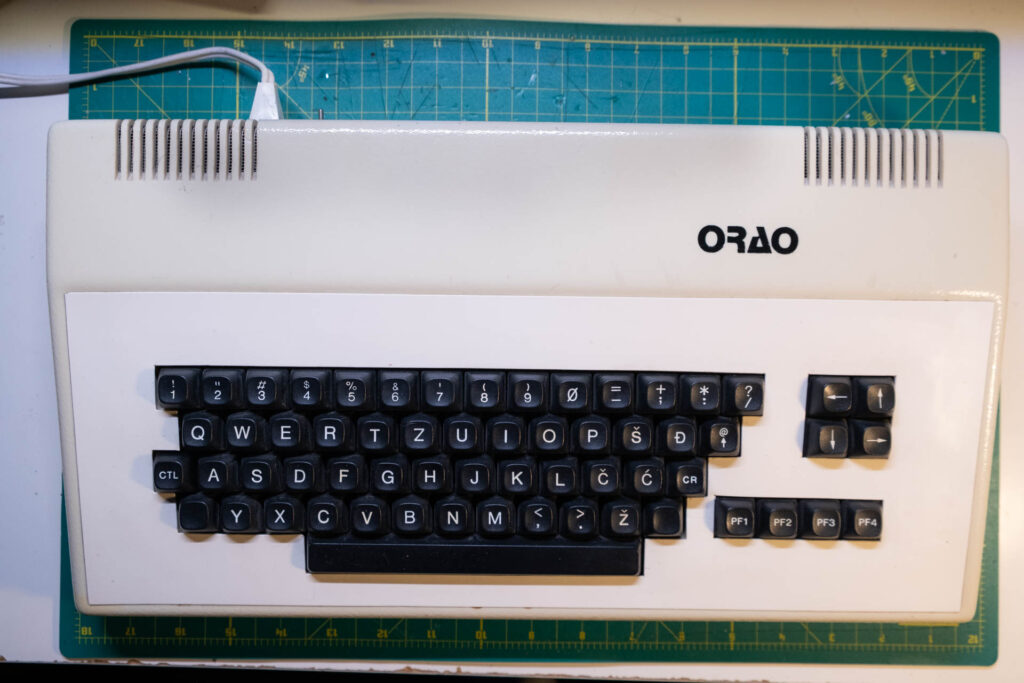
Last year I obtained a pair of Orao computers, which also use IEVT TY switches. Since I still had no idea what IEVT TY switches actually looked like, I decided to take one out and test it on my single layer board Galaksija. I quickly confirmed that these were indeed compatible, even though these particular switches had 10% angle and thus wouldn’t be usable without modification.
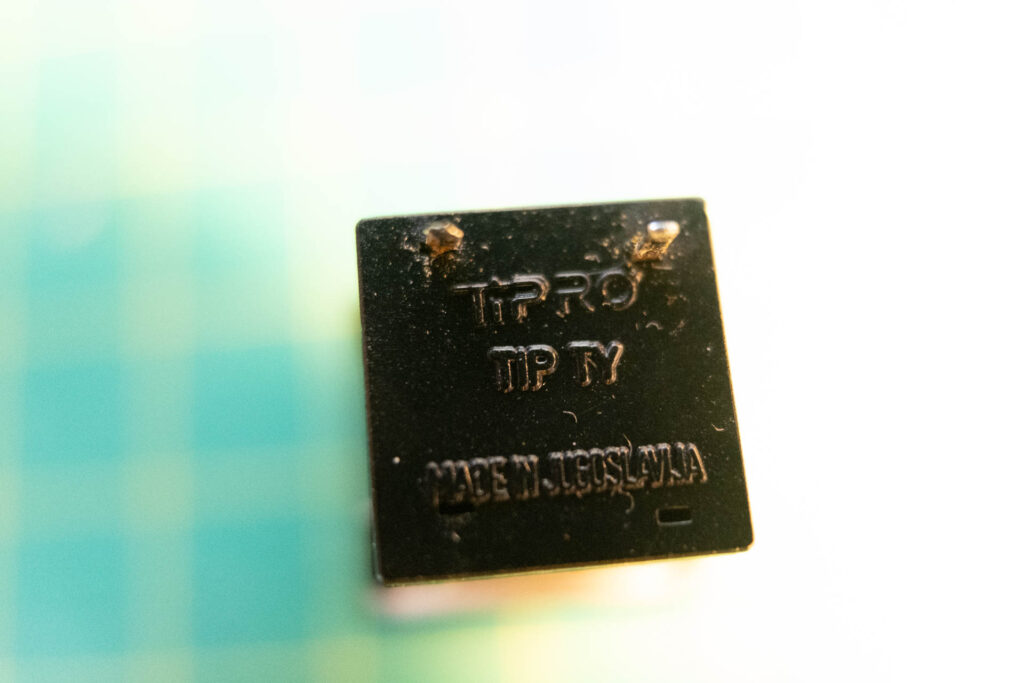
Back of the IEVT TY switch
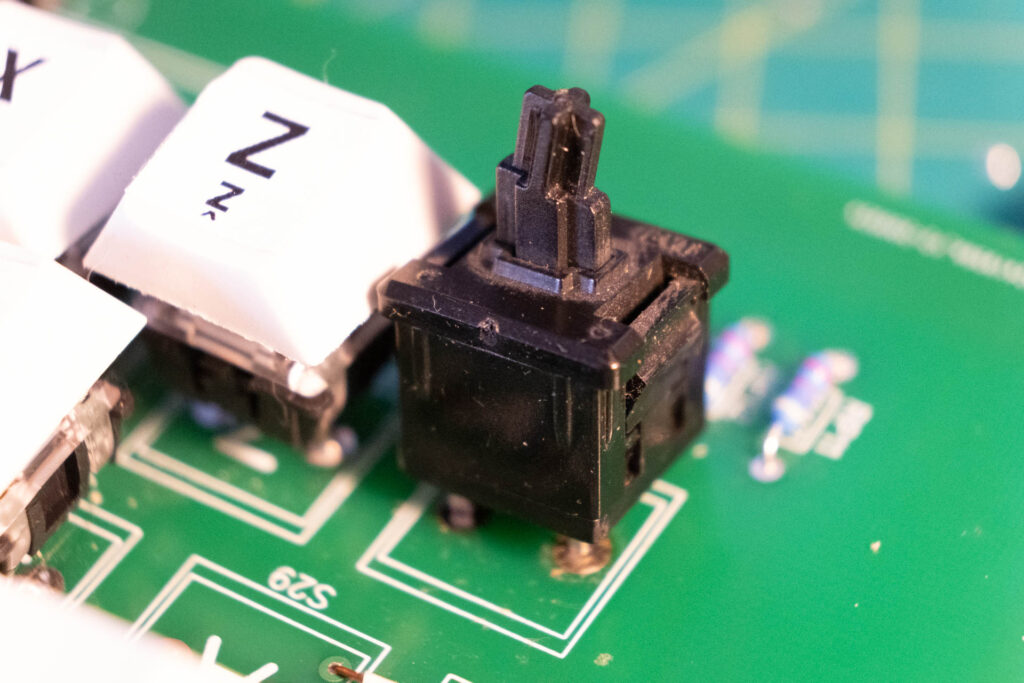
IEVT TY switch on a single board Galaksija (10% angle switch from the Orao)
Most importantly, I realized that the switch format I was looking for, with two connector holes in the middle of the switch, was just incorrect. Ever since I made my Galaksija, I’ve been looking for a switch that fit this footprint:

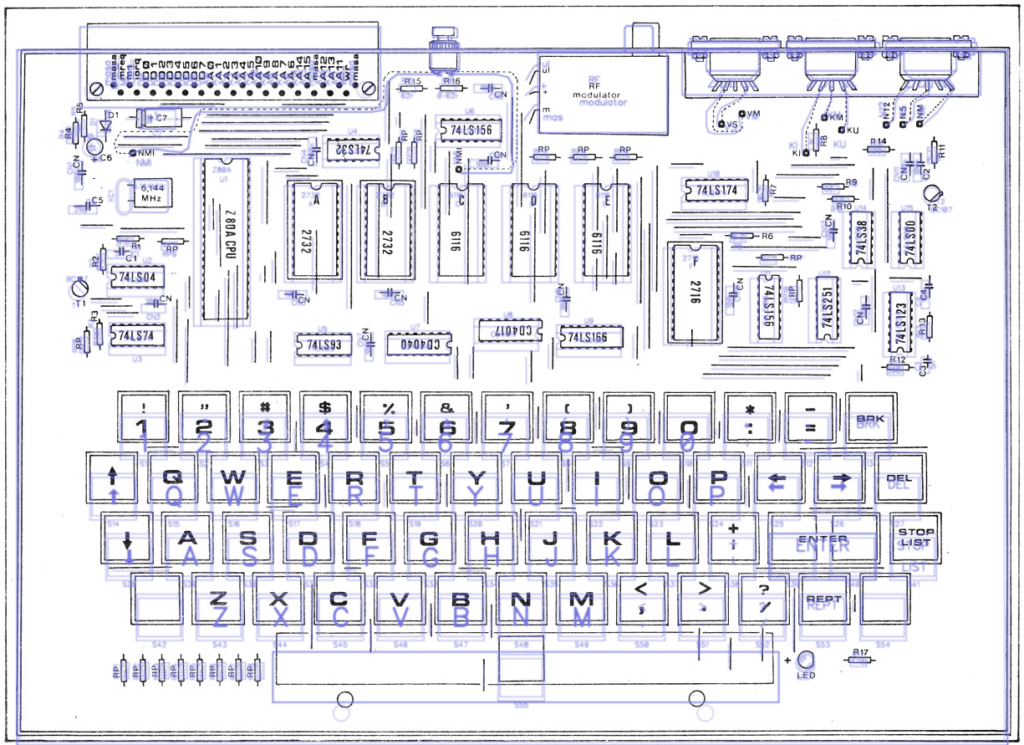
But this was a mistake with the silkscreen I got from the gerber on специалист-пк.рф/Galaksija, which was based on a gerber made by demerzel on forum.benchmark.rs back in 2013. On their gerber, the keyboard outline was pushed slightly down, making it seem like these keys switches looked different than they actually do.

With this confirmation (and A LOT of internet archaeology tracking the gerber files and when the original mix up was made with the silkscreen), I was able to continue the search for what IEVT TY switches actually were. A friend pointed me to Tipro SMK Style deskthority page, and this was the final piece of the puzzle. These key switches were virtually identical to my IEVT TY switches from the Orao, and due to branding in both the aforementioned catalog and my own switches, we were able to confirm that Tipro was the same factory that produced the TY switches — Slovenian company Tipro was founded in 1985 by engineers from IEVT (Institute for electronics and vacuum technology). Tipro produced a lot of products developed at the IEVT, and it was privatized in 1991 along with other state owned companies in Slovenia. They are still in business.
But back to TY switches — thanks to the Deskthority page, we were able to confirm that they were SMK J-M0404 series style of switches, the same kind that was used on some Apple //es and BBC Micros. I still don’t know if these were unauthorized clones, or if they were made under license from SMK, but they are certainly the same style. Luckily, I was able to verify this final test — I have an Apple II with this exact same type of switches! I took out one switch and was immediately able to verify that it fit the Galaksija perfectly!
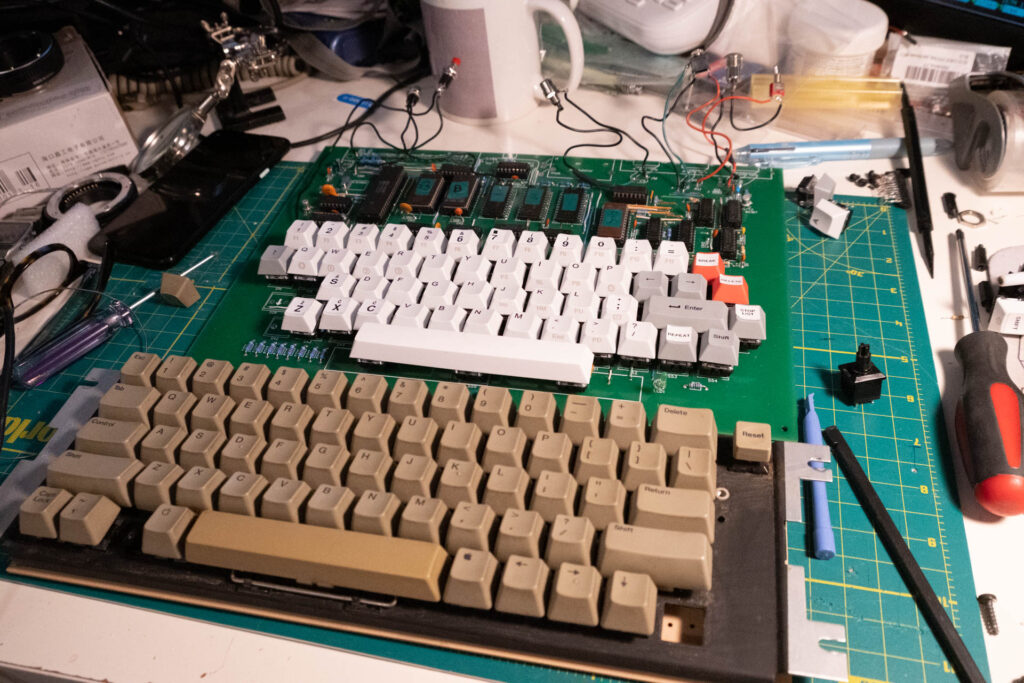
This test however verified one more thing — the gerber file that had the mistake on the silkscreen also didn’t have wide enough connector holes in the drill file, so in order to fit SMK style switches, the holes had to be widened. But this was a minor annoyance now that the mistery of the key switches was solved. I used a drill to widen the connector holes (see below for a photo).
The final step was sourcing replacements. I decided not to search for original IEVT TYs — it was unlikely that I would find any new old stock, and I had no interest in scavenging another vintage Yugoslav machine like an Orao just so I could get switches for my replica single board Galaksija.
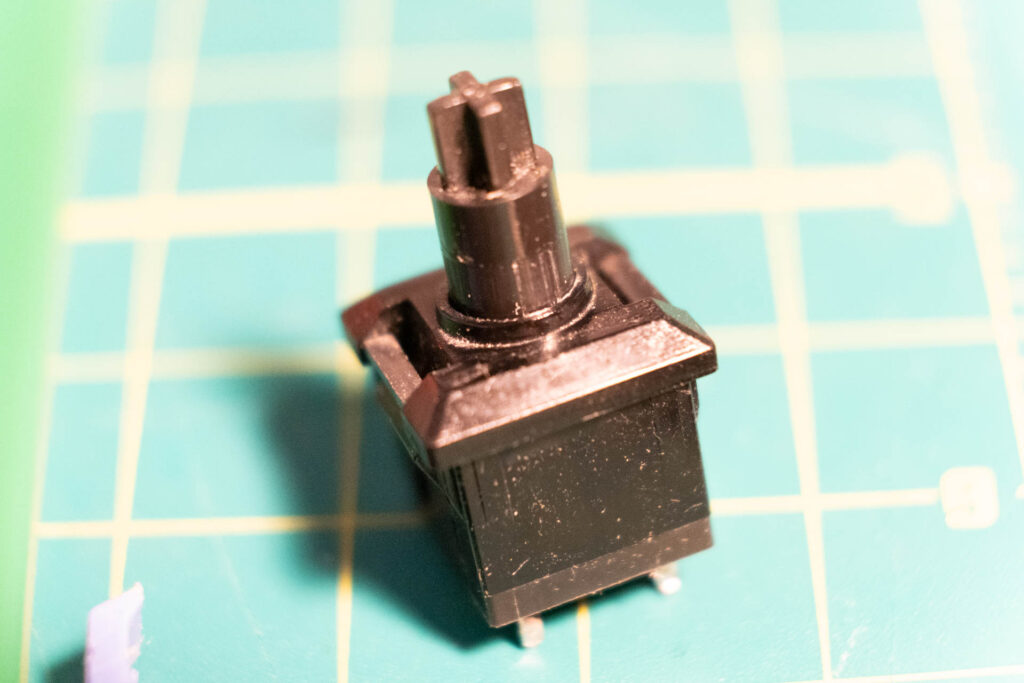
I did look for another source of SMK J-M0404 replacements for Apple //es, but they ended up being rare and expensive. Finally, thanks to some kind help, I found a source on eBay for new SMK style switches, and they even came with transparent relegendable caps!

Thanks to this, I’ve been able to use all the correct symbols on all the keys — I used Tomaž Šolc’s pdf file (inside this zip) to print out all the symbols. The shipping was a bit expensive, but I got them pretty fast. Now it was time to add them to my Galaksija! Technically I’m still missing the plate, but these key switches are already so much more stable than my original solution that I’ve decided not to wait until I can replicate a plate (although I do plan to make one some day)

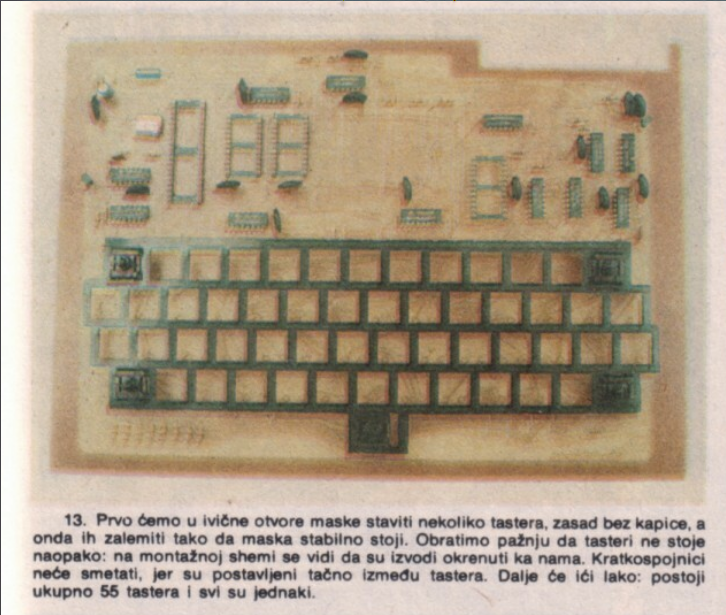
Keyboard plate instructions in Issue 1 of Računari u vašoj kući
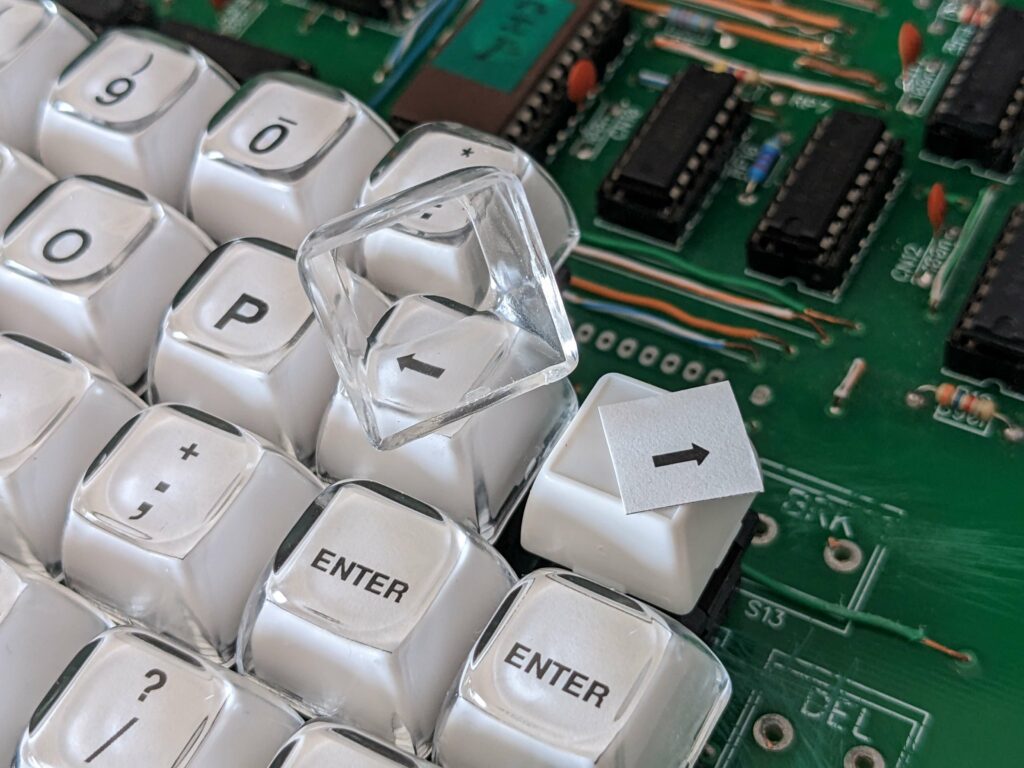
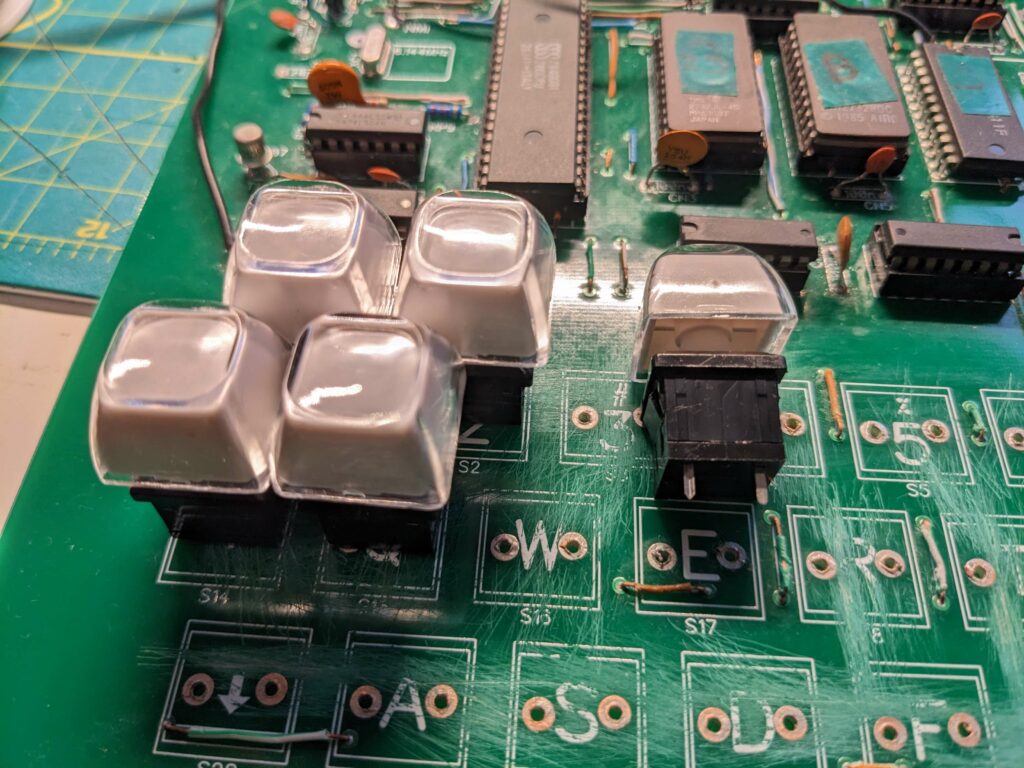
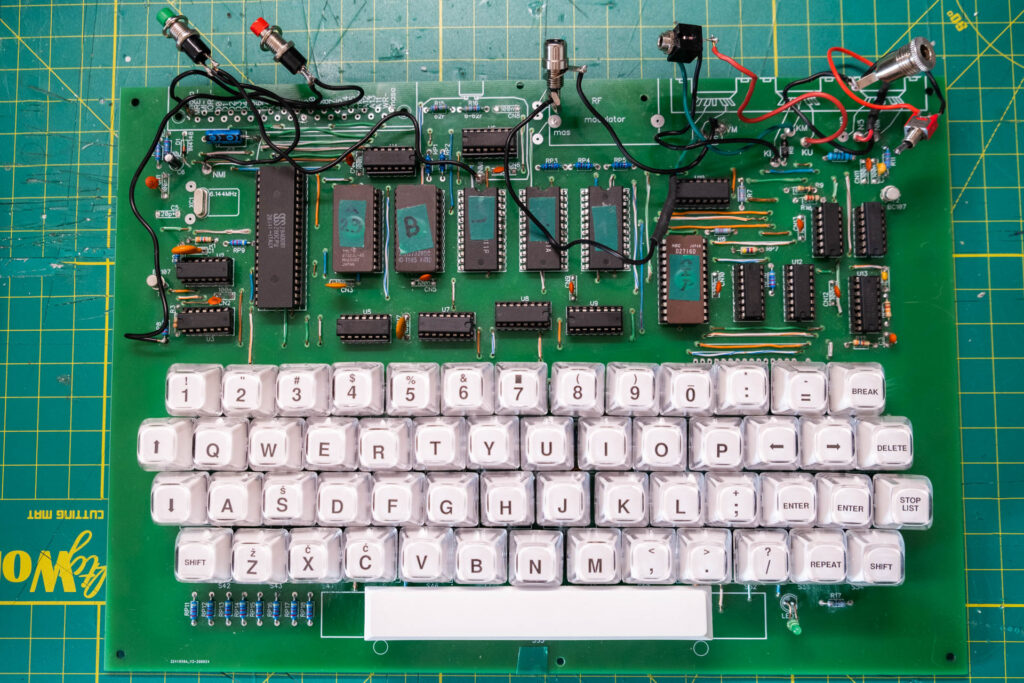
I’m pretty happy with the final result! I used a Cherry MX compatible spacebar (which fit ok on the SMK style switches), but I still need to find a good enter key, since it needs to fit on top of two switches. My space bar also need a stabilizer.
I’m very inexperienced when it comes to keyboards and key switches, so this turned into quite an odyssey, but I’m pretty happy with how it turned out. I hope this helps you if you’re trying to track down some of these ancient key switches and understand what’s what. I leave you with some extra pics of original IEVT TYs, made in Yugoslavia!
